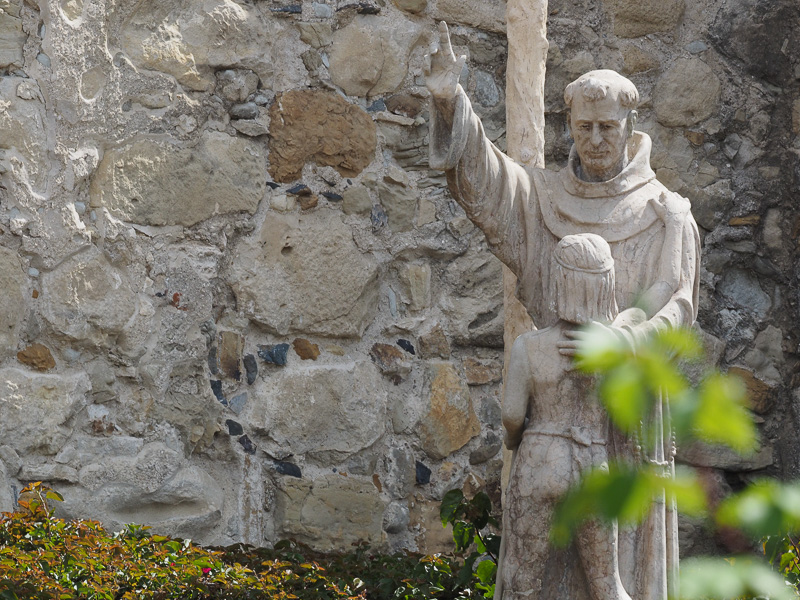Photographic Image Quality:
Lens: Field of View
All of these images were taken with the Olympus E-M1, micro-4/3 sensor, from exactly the same position next to the entrance of Mission San Juan Capistrano. Both the actual focal length and its full-frame equivalent are listed; each shot is made with a prime (single focal length) lens (except for the 150mm: see image at left). Aperture was constant (priority) at f/11; auto-focus was set as near as possible to the statue; auto ISO and shutter speed varied according to the image contents.
▸ The field of view that you see here will vary slightly with sensor format. These have a width-to-height aspect ratio of 4:3; a full-frame or APS-C sensor has an aspect ratio of 3:2.
Wide angle

9mm "fisheye" (FF=18mm). The fisheye lens is unique both by covering an ultra-wide
angle (approximately 180°) and by distorting the image circularly as its name suggests.

12mm (FF=24mm). This is probably the most popular wide angle
length, both in prime lenses and as the shortest setting of many zooms. (This
example is not how you'd actually use it to compose an image.)
Normal view

25mm (FF=50mm). Considered "normal" since this is a close approximation
of the human field of vision. For many years this was the lens for most
35mm film photography.

45mm (FF=90mm). Actually a short telephoto, this length
has always been popular as a portrait lens, allowing a working distance
that avoids distorting the subject's facial features.
Telephoto

150mm (FF=300mm). Zoom lenses in the FF 80–200 range are popular
for many camera systems; this one goes a bit longer.

300mm (FF=600mm). You'll see the big white FF $$K version of this
lens on the sidelines of many sporting events.